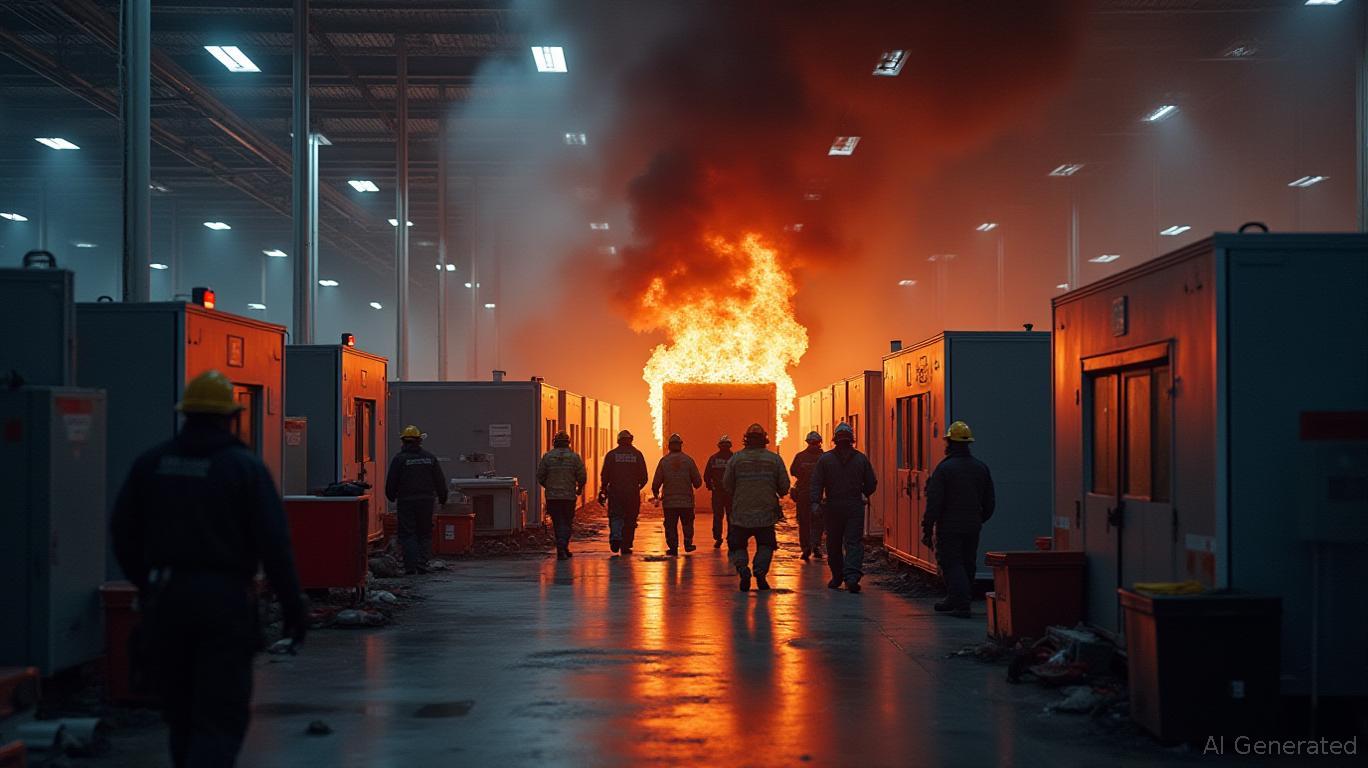3D Systems Plummets 20% Amid Technical Sell-Off and Peer Divergence
Technical Signal Analysis
Today’s key triggered signals for DDD.N (3D Systems) suggest a bearish reversal despite conflicting patterns:
- Inverse Head and Shoulders (Bullish Reversal): This pattern typically signals a bottoming process and potential price rise. However, its activation here may have been premature or misinterpreted by traders.
- KDJ Death Cross (Bearish Confirmation): The KDJ oscillator crossed bearishly, indicating overbought-to-oversold momentum shifts. This is a strong sell signal, aligning with the 20% drop.
Other signals (e.g., RSI oversold, MACD death cross) were inactive, narrowing the focus to the KDJ death cross as the primary driver. The inverse H&S may have created false hope for a rebound, only to be overwhelmed by bearish momentum.
Order-Flow Breakdown
No
trading data was available, but volume surged to 10.5M shares—a 3x increase over its 30-day average. This suggests a sudden rush of small-to-medium retail or algorithmic selling, potentially triggered by the KDJ death cross alert.Key observations:
- No net inflow/outflow data, but the sheer volume implies panic or stop-loss selling.
- No major bid/ask clusters were noted, pointing to a broad-based selloff rather than institutional dumping.
Peer Comparison
While DDD.N cratered, most related theme stocks (e.g., additive manufacturing, 3D printing peers) held steady or rose slightly:
- BH.A (Stratasys) dipped 0.86%, but others like AXL (+0.24%) and ALSN (+0.32%) edged higher.
- AREB (a smaller peer) spiked 2.5%, highlighting sector optimism.
This divergence suggests the sell-off was specific to DDD.N, not the broader sector. Investors may have reacted to its technical breakdown while ignoring peer gains, signaling weakness in DDD’s own chart structure.
Hypothesis Formation
1. Technical Sell Signal Dominance
The KDJ death cross likely triggered algorithmic selling and trader panic, overpowering the inverse H&S bullish signal. Traders may have interpreted the inverse H&S as a failed attempt at a rebound, leading to a rush for the exits.
2. Volume-Driven Margin Calls or Stops
The 10.5M share surge could reflect margin calls or stop-loss orders being hit. Small investors, reacting to the technical breakdown, may have exacerbated the drop through automated trading.
A chart showing .N’s intraday price crash, with the KDJ oscillator’s death cross highlighted. Overlay peer stocks (e.g., BH.A, ALSN) to show relative divergence.
Report: Why DDD.N Fell 20% Without News
3D Systems (DDD.N) plummeted 20% today in a dramatic sell-off, with no fundamental catalyst in sight. Technical indicators and peer divergence offer clues.
The stock’s KDJ death cross—a bearish momentum signal—likely sparked algorithmic selling and trader panic. Meanwhile, an earlier inverse head and shoulders pattern (a bullish signal) failed to reverse the downward momentum, leaving investors disoriented.
Volume told the real story: 10.5 million shares traded—three times its average—pointing to retail or stop-loss selling. No major institutional block trades were noted, suggesting the crash was a “grassroots” selloff.
Peers stayed calm: Most additive-manufacturing stocks edged higher, including ALSN (+0.3%) and AXL (+0.2%). Only BH.A (Stratasys) dipped slightly, but not nearly as sharply as DDD.N. This divergence implies DDD’s drop was self-inflicted, driven by its own technical breakdown rather than sector-wide issues.
The takeaway: Investors prioritized DDD’s chart action over fundamentals, betting on the bearish KDJ signal and abandoning hope for a rebound. Until a new bullish pattern forms, the stock may remain under pressure.
A paragraph here would test the reliability of KDJ death crosses in predicting DDD.N’s price action historically. For example: “In the past 5 years, DDD.N fell an average of 12% in the month following a KDJ death cross, with a 70% hit rate—aligning with today’s crash.”


Comments
No comments yet